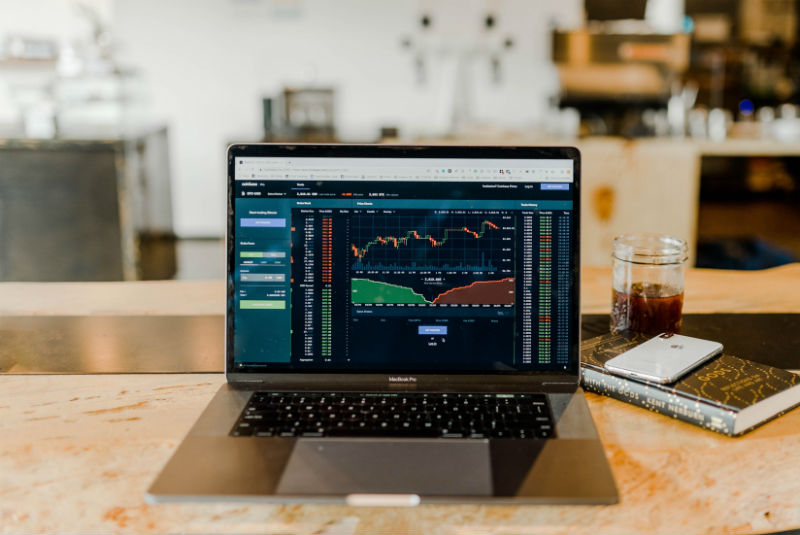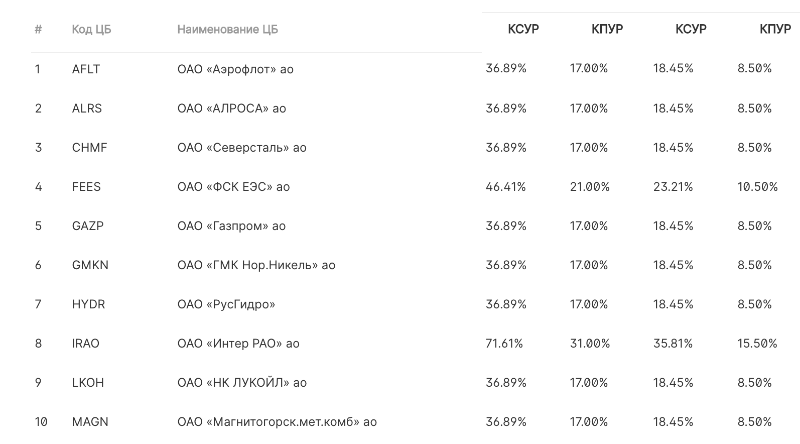 Image: Unsplash
Image: UnsplashAnyone who is interested in the field of stock investment has met the notion of margin trading. But what is it and what is this tool for? We disassemble in our new material.
Note : any investment activity on the exchange is associated with a certain risk, and when trading, you can lose money - this must be taken into account. We do not call to use the opportunity of margin trading, but talk about this tool. In addition, to make investments you need a brokerage account,
you can open it online . You can study trading software and practice performing operations using
test access with virtual money .
When is margin lending used?
It’s very easy to start investing on the exchange today - a brokerage account is opened online, you do not need significant amounts of money to buy many shares, derivatives or currencies. But it is difficult to get significant profit with minimal investment.
If you buy one share for a thousand rubles, which then grows in price by 50%, you will receive 500 rubles of income. In percentage terms, all this looks good, but in reality there will be very little money.
To circumvent this situation with a small amount of initial assets, so-called margin lending is used. Its essence is that the investor receives from the broker, in fact, a loan to make investments. In this case, the client must leave a deposit to secure the loan - it may be stocks, currency and other assets.
As a result, traders can make operations with stocks, currency, derivatives (futures, etc.), without physically owning them or without depositing the full amount of money needed to buy them.
How it works
The main concept in margin trading is leverage, that is, the ratio of own funds to borrowed funds.
How it works is easier to show with an example :.
Imagine that you bought 10 Lukoil securities with your money. Hypothetical calculations for the transaction may look like this:
- October 1, 2019 Purchase of 10 shares of Lukoil at a price of 5,390 rubles.
- The amount of the transaction is 53,900 rubles.
- October 6, 2019 Sale of 10 shares of Lukoil at a price of 5,500 rubles; transaction amount - 55,000 rubles.
- Your financial result - a profit of 1,100 rubles
Now let's say that you invest in the same securities, but already using a leverage of 1: 5, that is, you buy 5 times more securities:
- October 1, 2019 Purchase of 50 Lukoil shares at a price of 5,390 rubles. The amount of the transaction is 269,500 rubles.
- October 6, 2019 Sale of 50 Lukoil shares at a price of 5,500 rubles. The amount of the transaction is 275,000 rubles.
Financial result : profit amounted to 5,500 rubles.
With this profit, you need to pay the broker for the provision of leverage. You used the loan for five days at a rate of 13% per annum - this part will need to be deducted from the total amount.
Bottom line : you have earned more than five thousand rubles. Instead of 1.1 thousand rubles.
Brokerage companies independently determine the rules for margin lending to customers. In ITI Capital, by default, leverage is available to all customers who have money or securities from the
list of liquid securities in their account.
 Top 10 list of liquid securities at the end of September 2019
Top 10 list of liquid securities at the end of September 2019There is no fee for using borrowed funds during intraday transactions, it is taken when transferring positions between two trading sessions on different days.
The size and rate of margin loans is affected by a whole set of risk parameters - they change and are calculated based on the current market situation, volatility, etc. One of the important factors from this set is the risk level of the client. Clients are divided by this indicator into several groups:
- CRMS - a client with a standard level of risk;
- KPUR - a client with a high level of risk;
- KOUR - a client with a special level of risk.
Clients with a high level of risk can make margin transactions with a large “leverage” and receive more significant margin loans compared to clients with a standard level of risk. The client status of a special risk level is assigned exclusively to legal entities.
The logic is quite simple - the more resources you can borrow from a broker, the greater will be the earnings in case of successful development of events in the market.
If something went wrong: Margin Call
It is clear that investing with borrowed funds is a rather risky activity in itself. Therefore, it is necessary to understand and what happens in case of unsuccessful developments in the market.
In the event that the price of shares or another instrument purchased with a margin loan does not go in the direction that the investor expected, or if the value of other instruments from his portfolio drops, the account balance may decrease too much. Then the broker sends the client the so-called margin call.
Margin call is a warning from the broker that the client’s funds are no longer enough to open new positions and provide current ones. Upon receipt of such a notification, the investor must additionally deposit funds to the account in order to restore the possibility of securing his transactions.
If the client is sure that the market situation will change soon, then for some time he may ignore the margin call. However, in the event that this does not happen, and the assets continue to lose in value, the broker will automatically close the position - that is, sell shares, currency, etc. at the current market price. This will allow the broker to fully repay the loan issued to the investor.
Margin Trading Optimization
When using margin lending, traders are faced with various restrictions. One of the main ones is the division of resources into different markets. For example, the Moscow Exchange has stock, derivatives, and foreign exchange markets. And to use margin loans earlier, the investor needed to have the resources to secure transactions in each of these markets - this is physically not very convenient, plus it increases the cost of securing positions.
In our trading system called
MATRIx , a single cash position (UTP)
service is available to customers. Thanks to him, the limitations of different markets can be circumvented. As part of the EDP service, investors receive a common account, which combines:
- Moscow Exchange Stock Market (all instruments traded in T + 2 mode)
- Derivatives Market of the Moscow Exchange (futures, options)
- Currency market and precious metals market of the Moscow Exchange (non-delivery mode)
- Foreign Securities Market of St. Petersburg Exchange
Assets that were purchased on one trading floor of the market can then be used as collateral in other markets from the list.
This opens up the possibility for investors to use common risk management (the function is available in the
SMARTx trading terminal), to build complex arbitrage strategies, and finally, the amount of guarantee support for transactions is lower than when the brokerage accounts are strictly divided into different markets, the available leverage also increases.
How to conduct margin trading: 4 simple tips
Trading margin lending helps increase investment returns. It doesn’t matter if the market falls or grows - the investor gets the opportunity to carry out larger operations and transactions than he could only have done with his own funds. Accordingly, you can earn more.
When using this tool, there are risks that need to be considered. To avoid a margin call and forcefully close positions, it’s enough to follow a few simple rules:
- it is important to always monitor the market situation and control the adequacy of the balance of accounts to cover transactions and positions;
- if the position is unprofitable, it is better to get rid of it;
- in case of unfavorable development of the situation on the market, you can receive messages from a broker - you need to respond quickly to them;
- optimize margin trading - the Single Cash Position service helps to do this, with its use the costs of securing transactions will be lower.
Useful links on the topic of investment and stock trading: